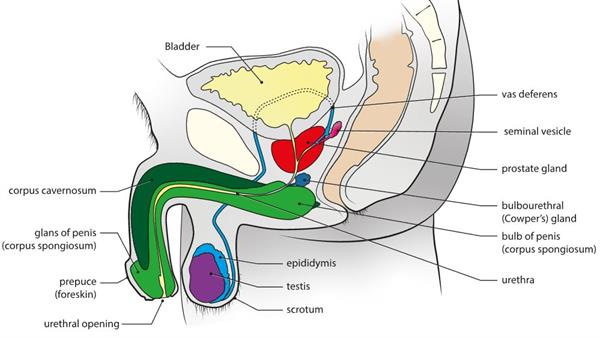
PUMPA - SMART LEARNING
எங்கள் ஆசிரியர்களுடன் 1-ஆன்-1 ஆலோசனை நேரத்தைப் பெறுங்கள். டாப்பர் ஆவதற்கு நாங்கள் பயிற்சி அளிப்போம்
Book Free DemoThe process involves the creation of a new organism is called the reproduction, that is essential for the survival of the particular species.
Reproduction is necessary for the continuation of the species to maintain the life of the species across various generations. The new organism is called the young one.
Reproduction in human
The ability to reproduce is one of the most important characteristics of living beings. In humans, there is a distinct sexual dimorphism, which means that males and females are physically and genitally distinct.
Male and female reproductive systems have multiple organs that are known as main and secondary sex organs. The gonads are the primary sex organs that contain gametes (sex cells) and secrete sex hormones. The genital ducts and glands are secondary sex organs that aid in the transportation of gametes and allow the reproductive process. The reproduction in humans is sexual reproduction as fusion of males gametes (sperms) and female gametes (ovum) occurs here.
After sexual maturity, the reproductive organs become functional. At the age of \(13-14\) years, males reach sexual maturity. It is reached by females between the ages of \(11\) and \(13\). The puberty period begins at this age. Hormonal changes occur in both males and females during sexual maturity, and these hormones affect the development of secondary sexual characters.
Male reproductive system
As we have learnt already in sexual reproduction there is an involvement of the male and female gamete, i.e., the fusion of the sperm and the ovum or egg, respectively.
The human male reproductive system consists of,
- Testes (primary sex organs)
- Scrotum
- Vas deferens
- Urethra
- Penis
- Accessory glands

Male reproductive system
Testes:
The male's contain a pair of testes which are located outside the abdominal cavity. They are commonly known as the male gonads as they contain male gametes (sperms) and produce the male sex hormone (testosterone). A mass of oiled tubules known as epididymis run along the inner side
of each testis. The developing sperm are fed by the sertoli cells in the testes.
of each testis. The developing sperm are fed by the sertoli cells in the testes.
Important!
Sperms are the smallest cells found in the body of males. In his lifetime, a typical male produces more than \(500\) billion sperm cells. Spermatogenesis refers to the mechanism of sperm formation.
Scrotum:
The scrotum is a loose pouch-like sac of skin that is separated internally by muscular division into right and left scrotal sacs. The two testes are housed in their own scrotal sacs. It also has a lot of nerves and blood vessels in it. The scrotum is a thermoregulator organ that maintains an ideal temperature for sperm formation. Sperm mature at a temperature of \(1-30\)°C below body temperature.
Vas deferens:
It is a long straight tube that delivers sperm to the seminal vesicles. As the seminal plasma of the seminal vesicle is rich in fructose, calcium and enzymes, the sperms are stored here.
Important!
Fructose is an energy source for sperm.
The vas deferens, along with the seminal vesicles, opens into the ejaculatory duct, which discharges the sperm and secretions from the seminal vesicles into the urethra. As it carries the sperms, it is also known as the sperm duct.
Urethra:
It is involved in the transport of sperm from the vas deferens through the urethral opening.
Seminal vesicles, prostate gland, and Cowper's glands are accessory glands associated with the male reproductive system. The secretions from these glands is known as seminal fluid, which combines with sperm to form semen. This fluid nourishes the sperm and aids in their transport.
Reference:
https://commons.wikimedia.org/wiki/File:Male_genital_system_-_Sagittal_view.svg